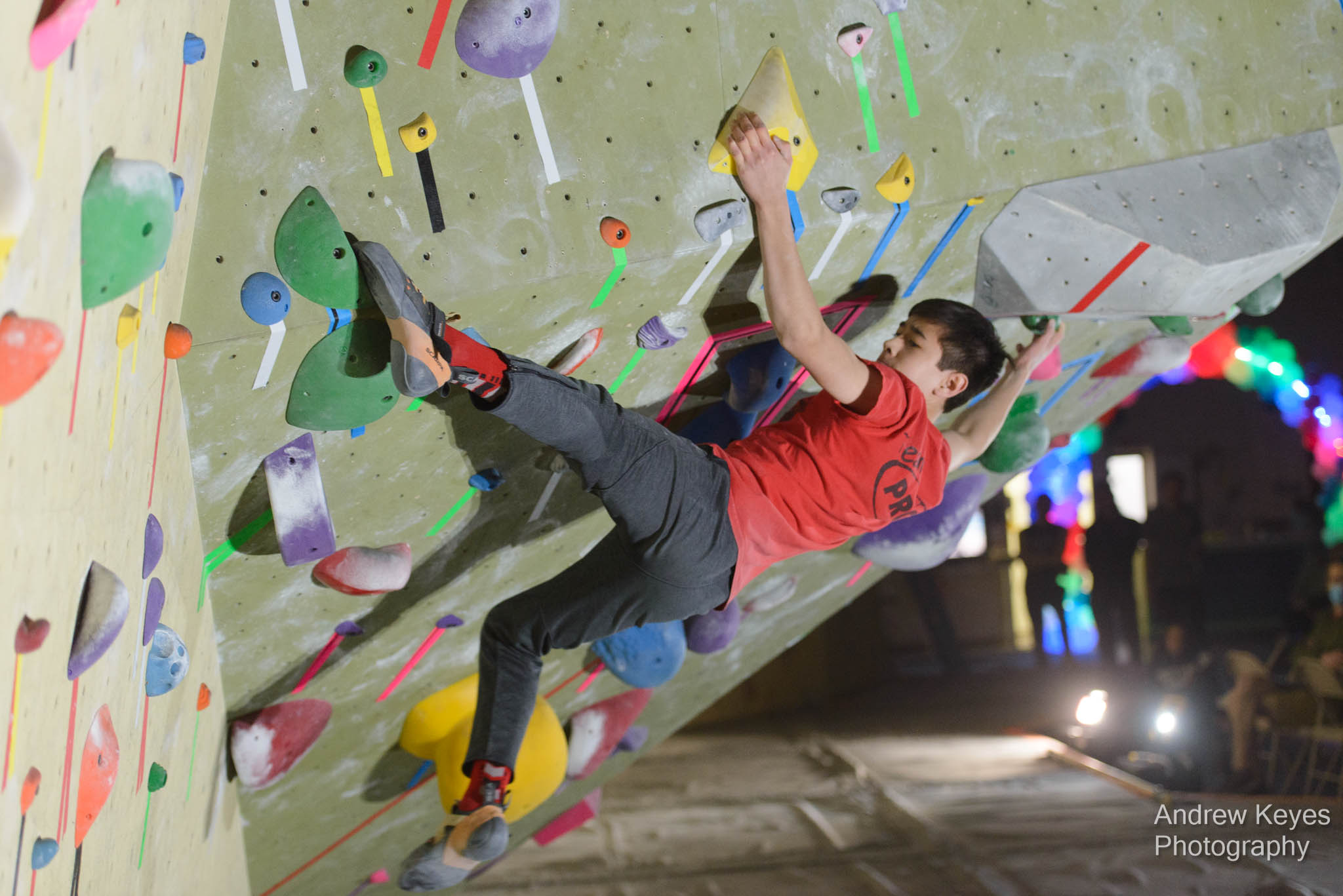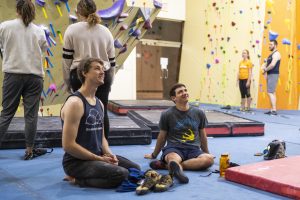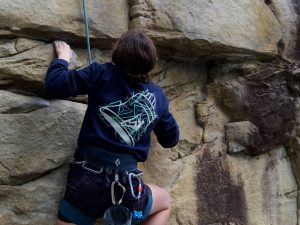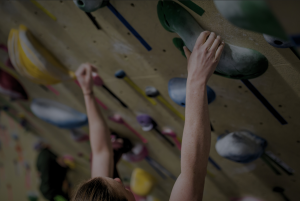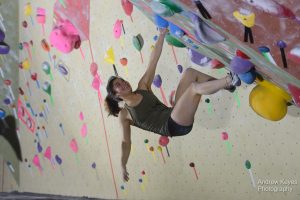What is Twist-Locking?
Twist-locking refers to a family of skills, all of which are based on the same underlying concepts: the twist, and the lock.
These two concepts provide a new, and flexible, approach to “locking out” our lower body, and therefore reducing the weight our upper body needs to carry. The family of skills include back-steps, drop-knees, and the reverse flag.
To look at how these concepts work on the wall, and differ from what we have discussed so far, we will focus first on the simplest kind of twist-lock: the back-step.
The Back-Step
Back-steps are the simplest version of a twist-lock, and therefore an ideal candidate to demonstrate the core concepts for this group of skills. Let’s go over the basic concepts.
Foot Positioning
The first difference you should notice is the position of your foot. In a back-step (and a drop-knee, as we will see in a later article) we use the outside edge of our climbing shoe, as opposed to the “big-toe”, or inside edge.
This is, in fact, where the back-step gets its name; by standing on the outside edge, a climber is forced to lean away from the hold they are pulling on, settling their weight back onto their foot, almost as if they were stepping backward on the wall.
Difference Between the Front-Step and Twist
This is also where the first twist comes in. Unlike the front-step (where we must arch our back and use our leg to pull our weight over our heel), in a back-step we, instead, twist our hip into the wall and aim to sit down on our heel.
Once our hips are in the proper position, hip against the wall and as close to directly over our heel as possible, they will feel locked in place, held in place by our core and balanced over the motion point.
Getting Into Position
1) Grab a good hold, a jug or, preferably, a side-pull, with your right hand.
2) Place your left foot (cross-body tension!) on a good foothold, either in line with or a bit to the right of your handhold. Remember to use your outside edge.
3) Step off the ground and flag your right leg, nice and straight, aiming to keep your thighs parallel.
4) Finally, using your core, twist your lower body into the wall, aiming to get your left hip almost touching the wall, and let your hips drift forward until they feel balanced almost directly above your left heel.
You should feel as if your hips are almost “locked” in place, requiring very little effort from your upper body to keep them in place. This is the twist and lock of a back-step! Follow the rest of the series here.
All material is reprinted with the permission of the author. Copyright 2022 David H. Rowland. All rights reserved.


